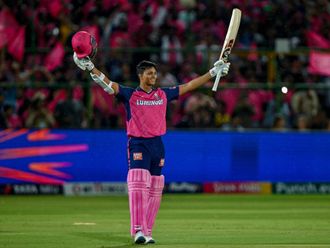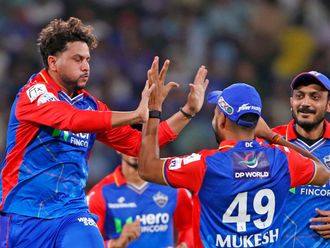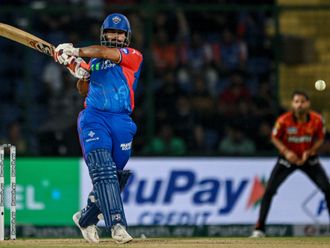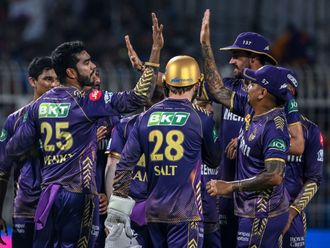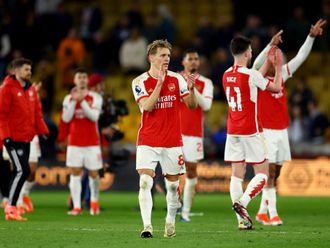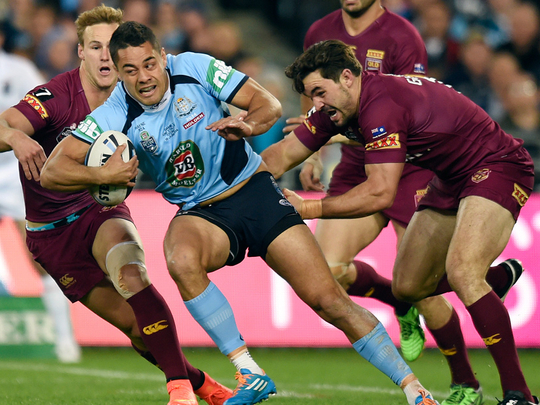
Sydney: In Jarryd Hayne’s decision to pass up the chance to become a $6-million (Dh22.03 million) man back home for a shot at playing in the NFL, it is hard to avoid the conclusion that Australian rugby league is paying a price for parochialism.
For all the brilliant athleticism, heart-stopping physicality and the cash flooding into the National Rugby League (NRL) after 2012’s billion dollar TV deal, the game can at best offer athletes the chance to be a big fish in a small pond.
While in the NFL, Hayne will be bidding to join a league with an outlook which was once just as narrow - it still offers the title of “world champions” to the winners of a one-nation competition - his departure highlights a growing trend.
In heading stateside to pursue his American dream, Hayne is the latest from a small group of the NRL’s biggest names to decide they have to go elsewhere to fulfil their ambition.
He follows New Zealander Sonny Bill Williams and Englishman Sam Burgess, key figures in the last two NRL champion teams who both departed for rugby union at the end of last season.
They will join Israel Folau, an athlete whose talents are regularly described as “freakish” and who left league for Australian Rules before arriving in union with the Wallabies.
The attraction of joining the 15-man game is not only financial but a chance to play competitive international sport and even possibly win an Olympic medal when sevens makes its debut in Rio de Janeiro in 2016.
Hayne, too, is unlikely to make anything like the reported A$6.75 million ($5.94 million or Dh21.66) over the next five years the Parramatta Eels were offering him in a new contract, even in the unlikely event he makes it in the NFL.
Rugby league’s firm grip on Australia’s biggest city was amply illustrated by the nine pages - front and back for starters - that the popular Sydney tabloid the Daily Telegraph devoted on Thursday to Hayne’s bombshell.
And yet beyond the boundaries of the harbour city, where nine of the 16 NRL teams are based, you needed to travel only as far as Melbourne - distances are relative in this continent-sized country - for the story to lose its traction.
It is the limited geographic spread of the game that also contributes to league’s problems at an international level.
The 13-man code has deep roots in the English counties of Lancashire and Yorkshire where it was born, the Australian provinces of New South Wales and Queensland, a part of Southern France and sections of the New Zealand city of Auckland.
Even within that small pool, Australia has become so dominant since the 1970s that international contests have all but lost a sense of meaningful competition.
In 74 Tests played since 2000, the Kangaroos have lost eight. They have also won the World Cup seven of the eight times it has been contested going back nearly four decades.
To partially fill that vacuum, New South Wales now play Queensland in State of Origin, a bitterly contested annual three-game series that most now consider the top level of rugby league competition in the world.
That Hayne was finally on the winning side with New South Wales this seasons after eight years of dominance by Queensland almost certainly played a part in his decision to take a crack at the NFL.
NRL chief Dave Smith, an English merchant banker brought in to try and “grow the game”, was comforted by the fact that Hayne’s departure was about dreams not cash and his belief that the talent pool that produced the 26-year-old was not exhausted.
“I have no doubt new stars will come through the ranks to replace those leaving the game,” he said in a statement. “One of the great things about the NRL is that there is always exciting new talent coming through the ranks to become the superstars of the future.”


